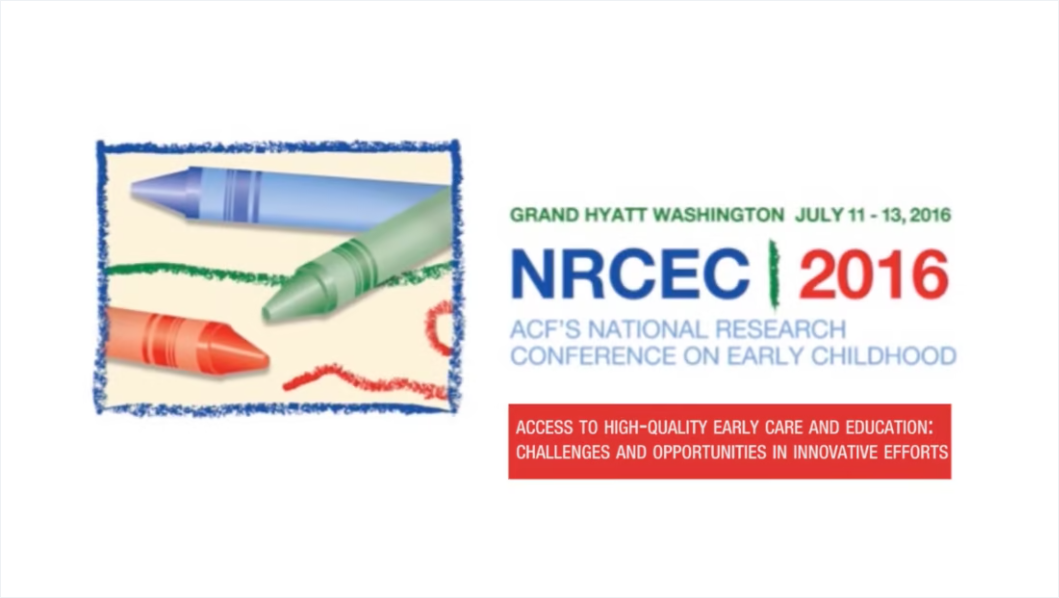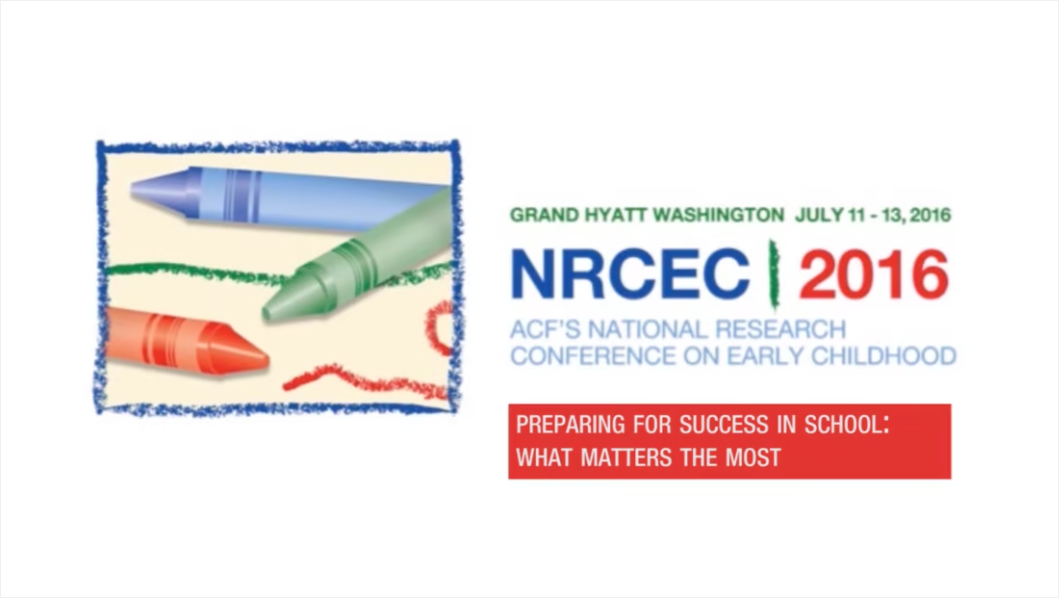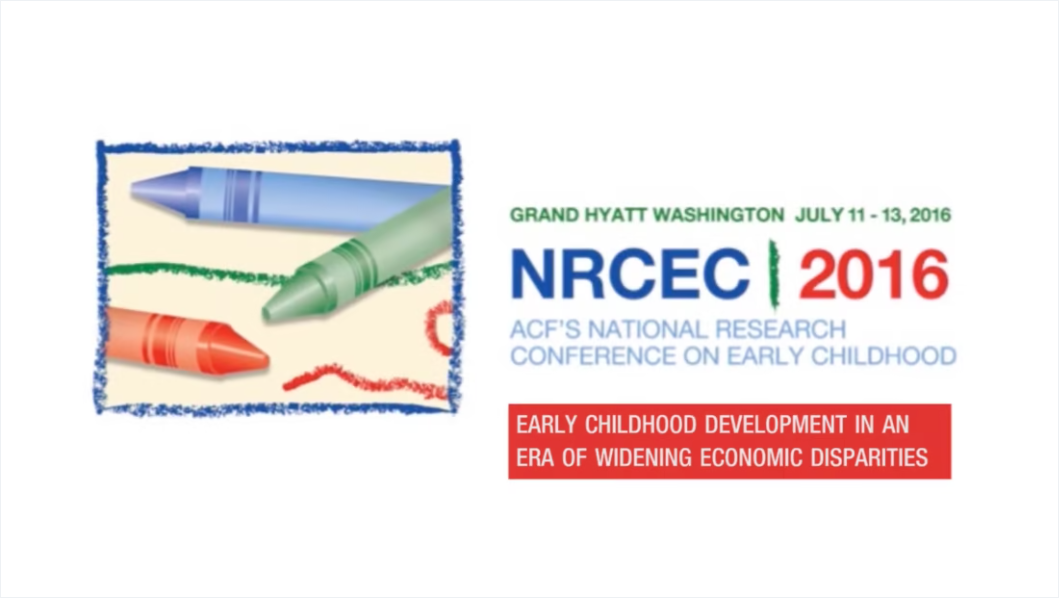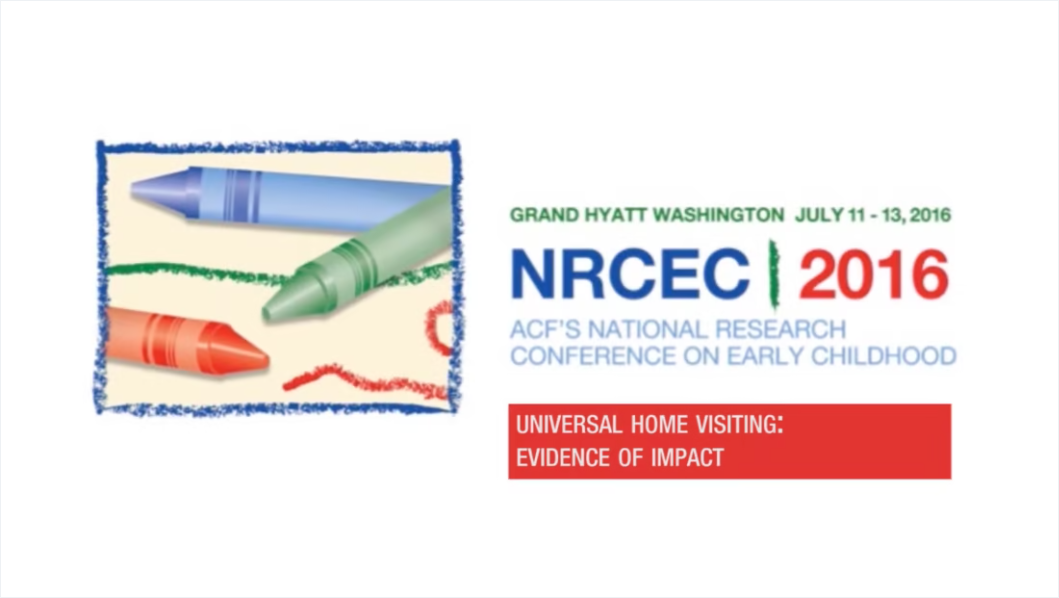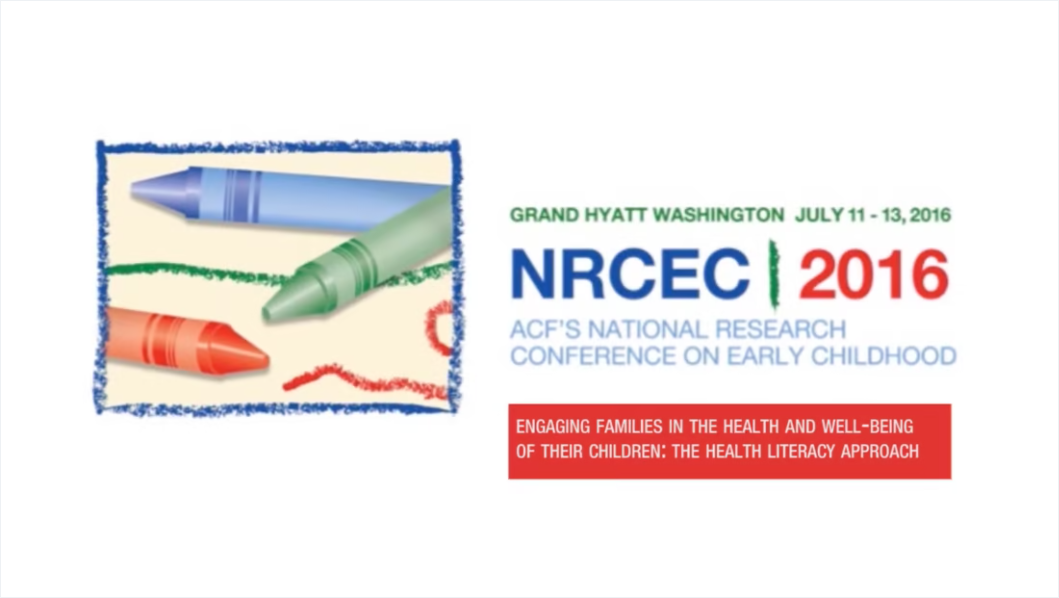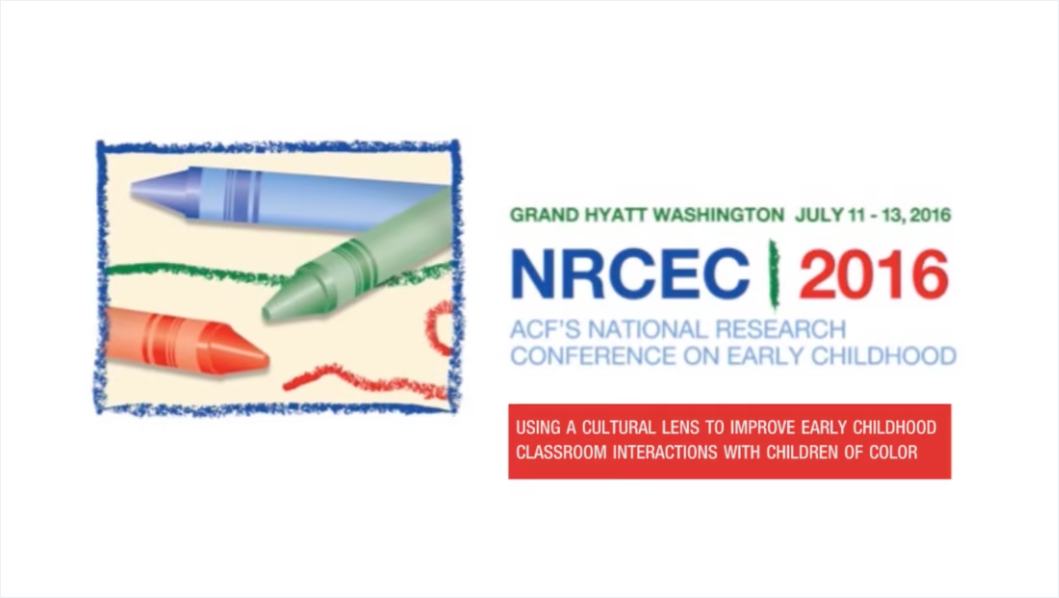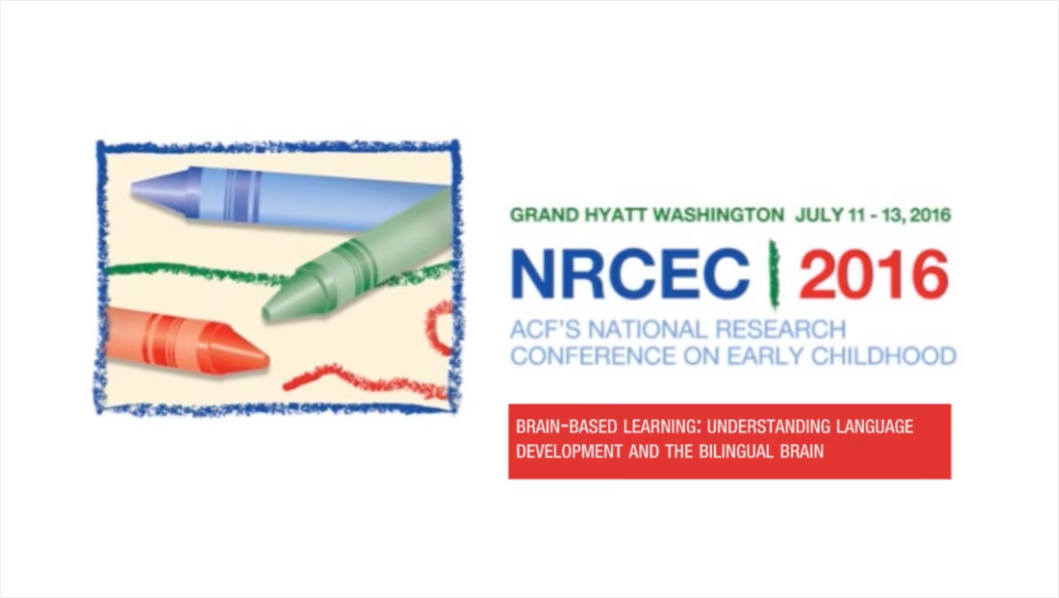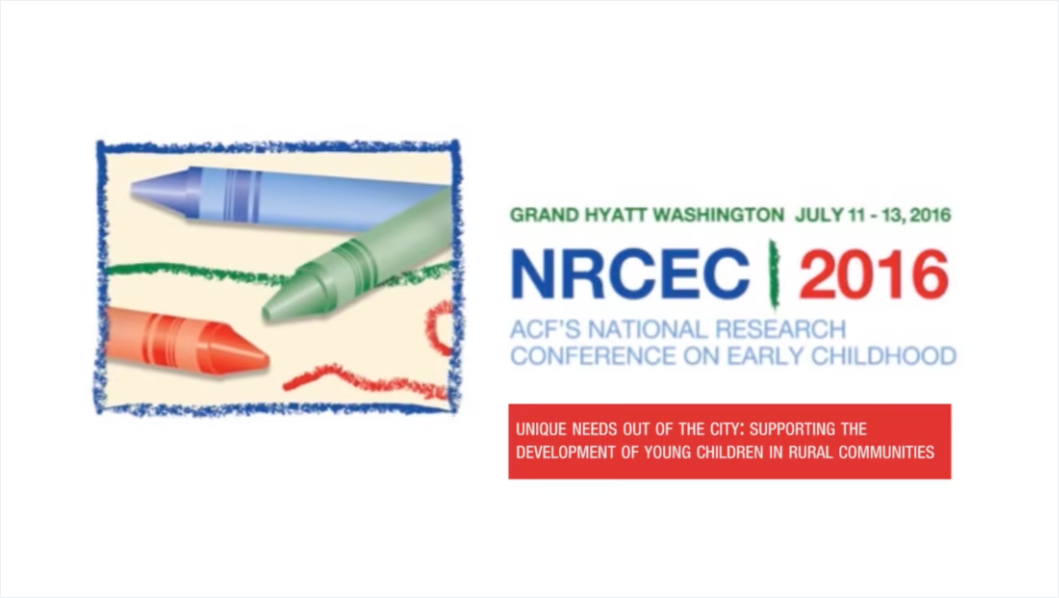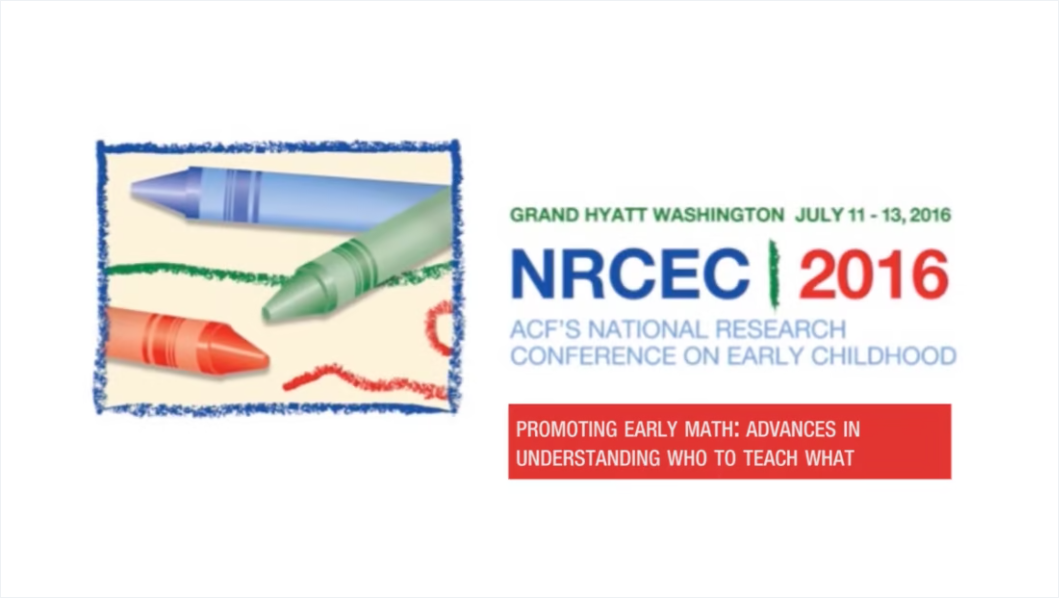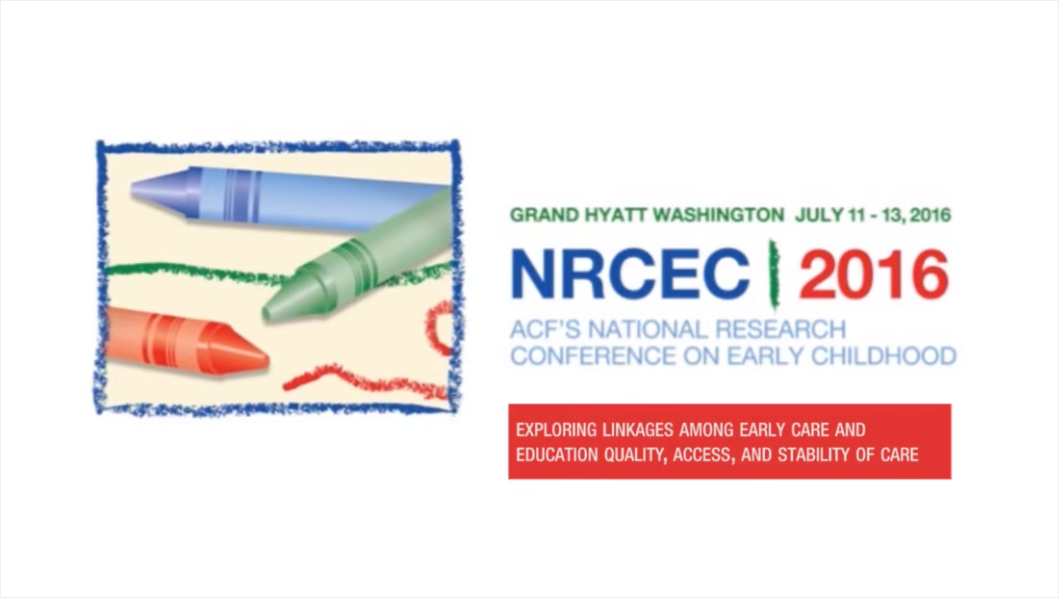Day 1:
Session 1 – Greetings and Opening Plenary
Greetings from ACF Leadership
- John W. Hagen, University of Michigan; Society for Research in Child Development
- Lonnie R. Sherrod, Executive Director, Society for Research in Child Development
- Naomi Goldstein, Deputy Assistant Secretary for Planning, Research and Evaluation, Administration for Children and Families
- Linda Smith, Deputy Assistant Secretary for Early Childhood Development, Administration for Children and Families
Access to High-Quality Early Care and Education: Challenges and Opportunities in Innovative Efforts
- CHAIR
- Chrishana Lloyd, The Nicholson Foundation
- PRESENTERS
- Shannon Rudisill, Associate Deputy Assistant Secretary for Early Childhood Development, Administration for Children and Families
- Sarah Friese, Child Trends
- DISCUSSANT
- Veronica Ray, The Leaguers, Inc. Head Start Program
This session begins with a presentation by Shannon Rudisill, Associate Deputy Assistant Secretary for Early Childhood Development, who will offer an overview of policy initiatives aimed at expanding access to high quality. A second presentation by Sarah Friese of Child Trends will provide an overview on the development of a framework to assess access to high-quality early childhood education by a group of experts working for the Office of Planning, Research and Evaluation. This synopsis also will include a discussion of how some of the administration models for creating high-quality supply (EHSCC Partnerships and using contracts for the Child Care and Development Fund in areas of low supply) can help when the market is not responding to demand. The session will conclude with a discussion of EHS-CC Partnerships as a strategy for increasing access to high quality. Veronica Ray will provide discussant comments. She serves as Executive Director and Chief Executive Officer of The Leaguers Head Start Program, and is the President of both the Region II Head Start Association and the New Plenary Biographies
Day 1:
Session 2 – Preparing for Success in School: What Matters the Most
- CHAIR
- Sally Atkins-Burnett, Mathematica Policy Research
- PRESENTERS
- Lizabeth Malone, Mathematica Policy Research
- Margaret Burchinal, Frank Porter Graham Child Development Institute, University of North Carolina at Chapel Hill
- Yange Xue, Mathematica Policy Research
- DISCUSSANT
- Douglas Clements, University of Denver
Sustaining Children’s Development from Head Start through Kindergarten—The Role of Home and Classroom Learning Environments
Ashley Kopack Klein, Lizabeth M. Malone, Jerry West
Ashley Kopack Klein, Lizabeth M. Malone, Jerry West
Early Language Outshines Other Predictors of Academic and Social Trajectories in Elementary School
Rebecca M. Alper, Margaret Burchinal, Roberta Golinkoff, Kathy Hirsh-Pasek, Amy Pace
Rebecca M. Alper, Margaret Burchinal, Roberta Golinkoff, Kathy Hirsh-Pasek, Amy Pace
Children’s Preschool Skills in Universal Preschool: How Do They Predict Elementary School Achievement?
Day 1:
Session 3 – Master Lecture — Early Childhood Development in an Era of Widening Economic Disparities
- CHAIR
- Hakim Rashid, Howard University
- PRESENTER
- Rashmita Mistry, University of California, Los Angeles
Day 2:
Session 1 – Universal Home Visiting: Evidence of Impact
- CHAIR
- Rachel Chazan Cohen, University of Massachusetts Boston
- PRESENTERS
- Kenneth A. Dodge, Duke University
- Barbara DuBransky, First 5 LA
- DISCUSSANT
- Deborah Daro, Chapin Hall at the University of Chicago
Day 2:
Session 2 – Master Lecture – Engaging Families in the Health and Well-Being of their Children: The Health Literacy Approach
- CHAIR
- Ariella Herman, UCLA/Johnson & Johnson Health Care Institute
- PRESENTER
- Benard Dreyer, American Academy of Pediatrics; New York University
- Healthy development and school readiness for children, especially those in low-income families and other special populations
- The safety and well-being of children, youth, and families
- Raise awareness that poor health literacy is widespread and that health literacy is crucial to family and child wellbeing
- Show the relationship between health literacy and child health outcomes
- Illustrate examples of successful interventions in health literacy in underserved populations
Day 2:
Session 3 – Using a Cultural Lens to Improve Early Childhood Classroom Interactions with Children of Color
- GREETINGS
- Keith Motley, Chancellor, University of Massachusetts Boston
- CHAIR
- Iheoma Iruka, University of Nebraska, Lincoln
- PRESENTERS
- Stephanie Curenton, Rutgers University
- Bryant Jensen, Brigham Young University
- DISCUSSANT
- Tonia Durden, University of Nebraska, Lincoln
Day 2:
Session 4 – Master Lecture – Brain-Based Learning: Understanding Language Development and the Bilingual Brain
- CHAIR
- Lisa Lopez, University of South Florida
- PRESENTER
- Ioulia Kovelman, University of Michigan; University of Texas at Austin
- DISCUSSANT
- Linda Smith, Deputy Assistant Secretary for Early Childhood Development, Administration for Children and Families
First, bilingualism affects children’s neural architecture for learning to read. Orthographies vary in their phonological transparency. Spanish offers better phonological transparency (or sound-to-print mapping) than English. When reading in English, Spanish-English bilinguals show greater reliance on phonology for learning to read as well as greater activation in areas of the brain associated with phonological processing. Imaging findings relate to contexts of bilingual education. For example, bilinguals with later age of bilingual exposure to English read better in phonics-based programs. Bilinguals with earlier age of bilingual exposure to English read better in meaning-based programs.
Second, the bilingual experience extends periods of neural sensitivity to linguistic input. Learning a language proceeds along a sequence of acquisition (i.e., babbling, first words, and so forth.). Prior research suggests that language input is critical to allowing children to progress along this sequence. New neuroimaging evidence suggests that children’s brain activity in the left hemisphere is triggered by relevant language input. This allows children to progress towards the next step in language acquisition. For instance, a monolingual infants’ left hemisphere activation increases for familiar language sounds just as infants are about to begin producing first words. These periods of neural sensitivity to relevant linguistic input may be extended in the bilingual learner.
Taken together, these findings inform theories of early language acquisition, literacy instruction, and clinical practices for bilingual learners.
Day 3:
Session 1 – Plenary – Unique Needs Out of the City: Supporting the Development of Young Children in Rural Communities
- CHAIR
- Chrishana Lloyd, The Nicholson Foundation
- PRESENTERS
- Susan Sheridan, University of Nebraska, Lincoln
- Lynne Vernon-Feagans, University of North Carolina at Chapel Hill
- DISCUSSANT
- Helen Raikes, University of Nebraska, Lincoln
Day 3:
Session 2 – Master Lecture – Promoting Early Math: Advances in Understanding Who to Teach What
- CHAIR
- Daryl Greenfield, University of Miami
- PRESENTERS
- Douglas Clements, University of Denver
- Julie Sarama, University of Denver
Day 3:
Session 3 – Exploring Linkages among Early Care and Education Quality, Access, and Stability of Care
- CHAIR
- Tamara Halle, Child Trends
- PRESENTERS
- Elizabeth E. Davis, University of Minnesota
- Rebecca Madill, Child Trends
- Heather Sandstrom, Urban Institute
- DISCUSSANT
- Nicole Forry, Child Trends
Why Change? Parents’ Perceptions of their Child Care Experiences and Reasons for Change
Julia Henly, Alejandra Ros Pilarz, Heather Sandstrom
Julia Henly, Alejandra Ros Pilarz, Heather Sandstrom
Provider Accreditation and Continuity of Subsidized Arrangements
Amy Blasberg, Elizabeth E. Davis, Tamara Halle, Caroline Krafft, Rebecca Madill
Amy Blasberg, Elizabeth E. Davis, Tamara Halle, Caroline Krafft, Rebecca Madill
Access to Early Care and Education: Family-Centered Measures of the Cost-Quality Tradeoff
Elizabeth E. Davis, Won Fy Lee, Aaron Sojourner
Elizabeth E. Davis, Won Fy Lee, Aaron Sojourner
Day 3:
Session 4 – 2016 Edward Zigler Master Session – Self-Regulation and Executive Function:
The Forest and the Trees
- CHAIR
- Sarah Watamura, University of Denver
- PRESENTERS
- Clancy Blair, New York University
- Stephanie Jones, Harvard University

